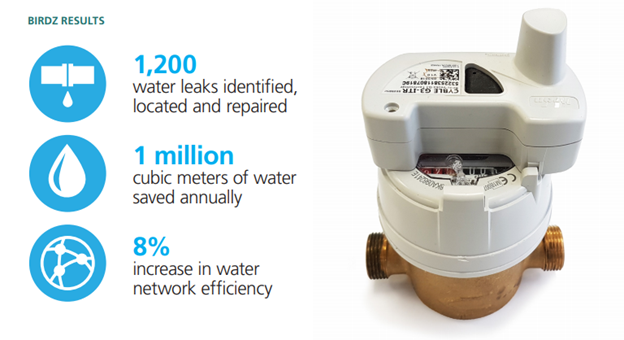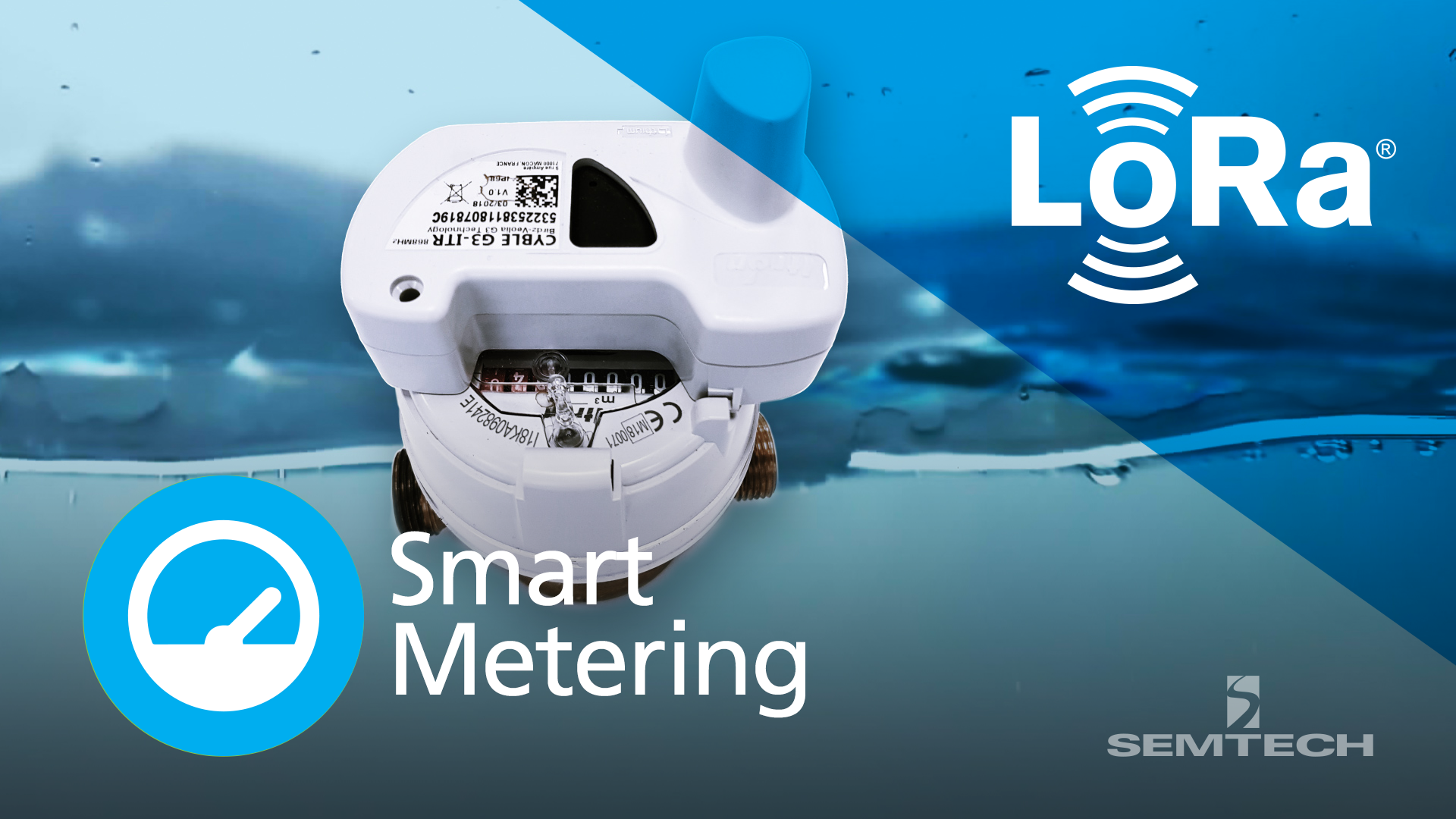21 November, 2019 3 min read
As the global market for smart water meters continues to grow, Semtech hosted, “Deploying Smart Water Meters: How to Transition from AMR to AMI with LoRa®-based Solutions from Birdz,” a webinar with Birdz, a subsidiary of Nova Veolia and a global leader in optimized resource management. The webinar discussed strategies for utility providers to improve meter efficiency by adopting fixed network solutions based on Semtech’s LoRa devices and the LoRaWAN® protocol.


Birdz also provides LoRa-based smart hybrid solutions that make it easy for utilities to switch from automated meter reading (AMR) solutions, which provide data only at monthly or quarterly intervals, but with the hassle of traditional walk-by or drive-by reading methods, to fixed long range advanced metering infrastructure (AMI) that allow hourly or daily data transfer over LoRaWAN-based networks for more efficient utility management and billing.
This webinar was a guiding tool to identify ways for utility companies to leverage Birdz’s LoRa-based solutions to transition their infrastructure smoothly and progressively from AMR to AMI. Learn more about transitioning from AMR to AMI below.
For billing purposes, utilities must cope with local regulations that require index collection annually, quarterly or monthly. The SLA meter index collection means 100 percent of data from meters must be collected whether AMR or AMI solutions are being used. With AMI, real-time data can be collected and transmitted regularly. There is SLA specific to data collection over a period, especially for networks that measure key performance indicators over a long period of time. Typically, the daily index values of each meter must be reported on a monthly basis, as they are in Lyon. AMR solutions have difficulty collecting data in real time and complying with high operational cost to operate with a monthly SLA. In other use cases, another kind of SLA may be required. For example, in a prepayment solution with actuators, such as a valve controlled remotely, SLA is required with a maximum network latency around seconds – this is easily accomplished with LoRa-based AMI solutions, but not with AMR.
All operators providing public or private connectivity are important for utilities. Public network operators are better positioned for the transition from AMR to AMI since they can match utility requirements by providing a unified price of connectivity in the whole territory. Since water is a public service, it cannot be charged depending on the location or available connectivity. It is important for public networks to align with utility requirements, taking into account the long lifetimes of solutions (15 years for water is typical), and provide good coverage with proper gateway spacing to ensure both good redundancy and good sensitivity for radio coverage. With LoRa devices, operators can provide a variety of solutions that leverage long range connectivity for meters located deep indoors. With a simple installation and affordable gateways, the flexibility of on-demand coverage is a key differentiator against other connectivity technologies that cannot adapt so easily. LoRaWAN enables network operators to manage secure and reliable infrastructure, connectivity services and deploy additional applications that mutualize their cost of infrastructure.

AMR and AMI can provide the same amount of data, theoretically, but they do not transmit data with the same quality or synchronicity. With AMI, more data is collected and transmitted every day with a measurement granularity that can be updated from every 10 minutes to hourly. With AMR, meter data is collected and transmitted less frequently. AMI solutions can detect leaks and notify operators in near real time, allowing for time to plan repair operations when necessary. AMR can only transmit alarms or notify operators of leaks once a walk-by or drive-by has been conducted. AMI meters send real-time data for analysis that provides benefits and greater operational efficiency for end users.

To learn more about smart water metering and Birdz’s advanced solutions, download the white paper:
Semtech®, the Semtech logo, LoRa®, and LoRaWAN® are registered trademarks or service marks of Semtech Corporation or its affiliates. Other product or service names mentioned herein may be the trademarks of their respective owners.
イノベーションを受信トレイにお届けします。当社のブログに登録して、Semtechの最新情報を入手してください。